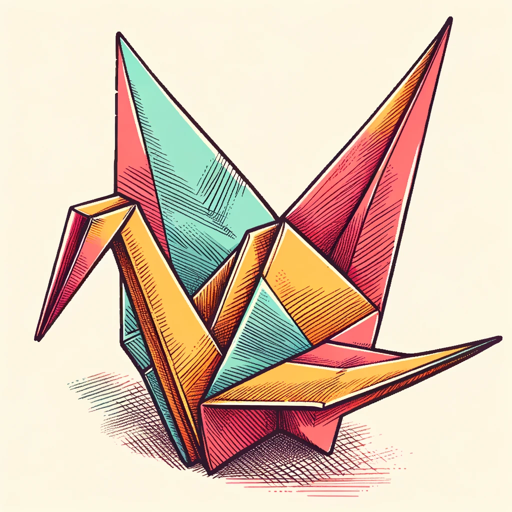Nude Descending a Staircase No 2-artistic insights and analysis.
AI-powered exploration of dynamic abstraction.
Tell me about Duchamp's influences.
How does this painting reflect its era?
Explain the technique used in your creation.
Compare yourself to other Duchamp works.
Related Tools
Load More
p5.js Visual Art Composer
Crafts complex p5.js code for artistic visuals.

Leonardo da Vinci - Image Recreator
Expert in recreating images with photorealistic precision based on user uploads.
Colorbot
Colorbot transforms your thoughts into a visual masterpiece, blending technical precision with emotional depth to realize your creative vision. Let's paint your imagination!

Sketch Artist
Accurately converts photos to line art.

Transform
Transform an image into a random style!

IMAGE BLENDER by NMA
Creates new images from uploaded image files
20.0 / 5 (200 votes)
Nude Descending a Staircase No. 2: A Revolution in Movement and Form
Marcel Duchamp's 'Nude Descending a Staircase No. 2' is an early 20th-century masterpiece that blends Cubism and Futurism to depict the fluid motion of a figure in descent. Painted in 1912, it challenges the traditional representation of the human form by fragmenting it into geometric planes, emphasizing dynamic motion over static depiction. The piece is renowned for its innovative portrayal of movement, where a figure is not a snapshot in time, but an overlapping series of motions, much like frames of a film. This dislocation of form offers a visual parallel to the era's fascination with machinery and speed. An example of its influence can be seen in how it inspired modern kinetic art, capturing sequences of movement in physical or visual art forms.

Key Functions of Nude Descending a Staircase No. 2
Depiction of Time and Motion
Example
The painting illustrates the subject in continuous motion, akin to the concept of film frames.
Scenario
Artists and filmmakers use Duchamp's work to explore temporal motion, echoing in stop-motion animation and time-lapse photography.
Fusion of Cubism and Futurism
Example
It merges the fragmented perspective of Cubism with the focus on motion found in Futurism.
Scenario
This combination influences modern design in fields like architecture and industrial design, where dynamic forms and multiple viewpoints are critical.
Challenge to Traditional Aesthetics
Example
By presenting the body in geometric abstraction, the painting defies classical representations.
Scenario
Contemporary artists use this framework to push the boundaries of figurative art, shifting to abstraction and conceptualism in their work.
Ideal Audiences for Nude Descending a Staircase No. 2
Modern and Contemporary Artists
Artists who seek to experiment with form and motion benefit from Duchamp’s radical rethinking of the human figure and motion, applying it in various forms like sculpture, painting, and digital art.
Art Historians and Curators
Those studying the evolution of modern art, particularly movements like Cubism and Futurism, use the painting as a key example of how early 20th-century artists broke from realism to embrace abstraction, movement, and modernity.

How to Use Nude Descending a Staircase No. 2
Visit aichatonline.org for a free trial without login, also no need for ChatGPT Plus.
Begin by accessing the site to explore the tool without any subscription requirements or sign-ins.
Explore artwork context
Familiarize yourself with the historical and artistic significance of 'Nude Descending a Staircase No. 2', which combines Cubism and Futurism influences.
Engage with analysis
Use the tool to delve into themes like movement, abstraction, and dynamism in early 20th-century art.
Apply insights
Incorporate the tool's features for academic research, creative interpretation, or inspiration in art projects.
Refine understanding
Iterate on your understanding by revisiting different layers of artistic meaning for deeper analysis and critical writing.
Try other advanced and practical GPTs
Bullet point
AI-powered tool for structured content

MS Power Point Pro
AI-Powered Presentations, Perfected.

Straight To The Point
AI-powered precision for your queries.

Power Point Creator Assistant
AI-Powered Presentation Creation Made Easy

Power Point Generator
AI-powered Presentation Creation Made Easy.

Equity Edge
AI-powered financial insights made simple

Origami Adventure
AI-powered origami guide for all skill levels.

Knowledge Builder
Enhancing Learning with AI-Powered Insights

Knowledge Illustrator
Enhance Your Creativity with AI-Powered Precision

Sysadmin
AI-Powered Linux Server Assistance

CV Manager
AI-Powered Personalized CVs for Career Success

Exact Images
Exact Images: AI-driven visual creation.

- Creative Inspiration
- Historical Context
- Art Analysis
- Conceptual Thinking
- Movement Study
Common Questions About Nude Descending a Staircase No. 2
What artistic movements influenced this painting?
The painting blends elements of Cubism and Futurism, focusing on fragmentation and movement.
Why is the painting considered controversial?
Its abstract depiction of the human form and motion caused a stir at the 1913 Armory Show, challenging traditional artistic norms.
What does the painting symbolize?
It represents the dynamic, mechanized motion of the modern era, breaking down movement into overlapping forms.
How is movement depicted?
By using sequential, overlapping shapes and fragmented lines, Duchamp shows continuous motion in a static form.
What is the significance of color in the painting?
Muted browns and ochres draw focus away from the individual and onto the geometric, mechanized form, emphasizing movement over identity.